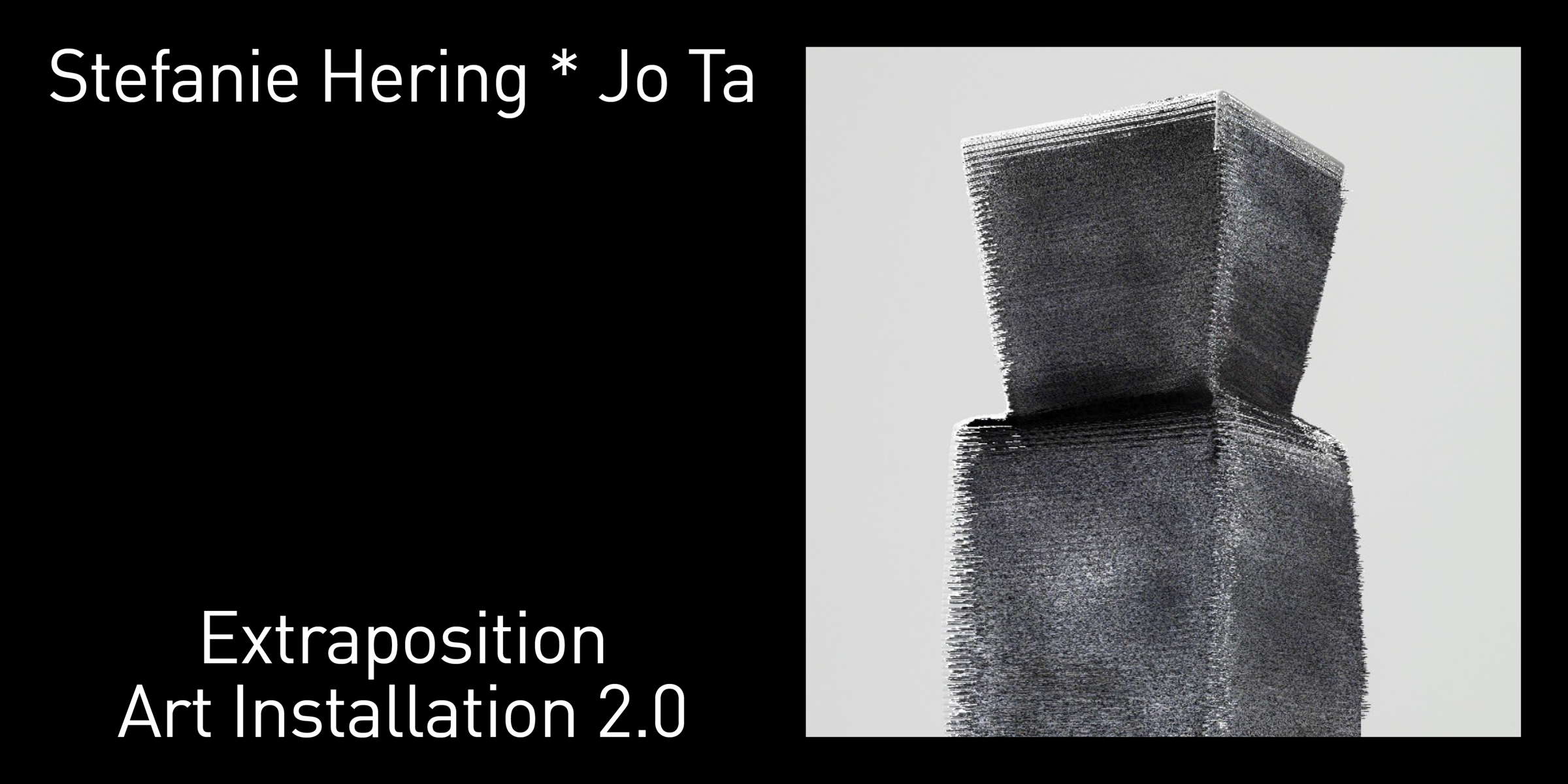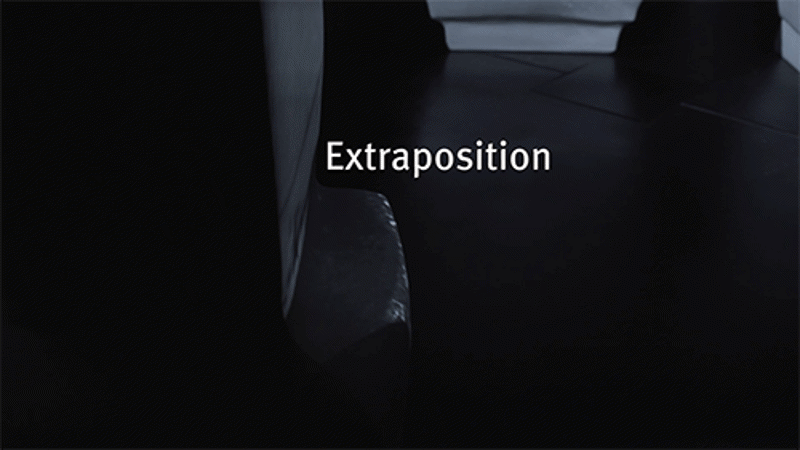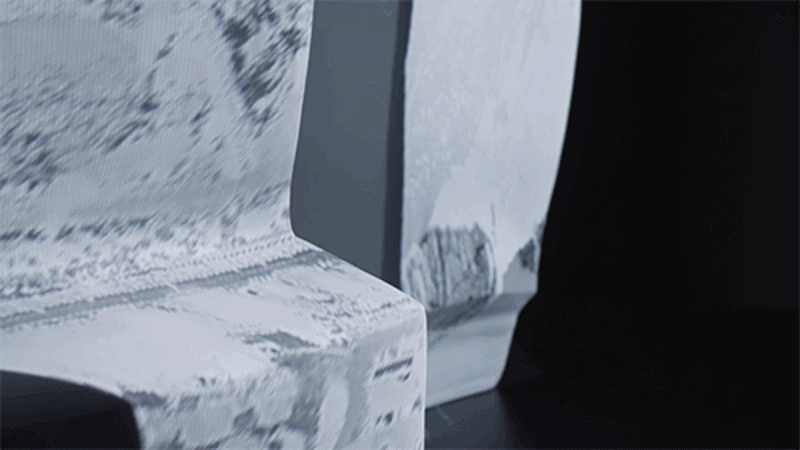
Introduction to the World of Handcrafted Wine Glasses
In the following, we turn our attention to the new wine glasses of the Domain collection: Based on designs from 2009, Stefanie Hering has created a series of handcrafted stemware, developed in collaboration with the renowned glass manufacturer Kvetna in the Czech Republic.
Read more →
Extraposition Art Installation 2.0 | Stefanie Hering * Jo Ta
In the “Extraposition Art Installation 2.0 | Stefanie Hering * Jo Ta”, Stefanie Hering's minimalist, archaic vessels from the “Extraposition” series become the protagonists of a fascinating video mapping project.
The trained master ceramicist Stefanie Hering has always straddled the border between art and artistic craftsmanship – both with the sophisticated dining collections designed for her Berlin manufactory and with her pure art editions such as "Extraposition" and "Sublime Conversation". After working with the Thai photo and happening artist Wasinburee Supanichvoraparch and the photographer Jens Bösenberg, the artist, who loves experimenting, is once again seeking a dialogue between her own creative approach and that of an artist from a completely different genre. In the "Extraposition Art Installation 2.0 | Stefanie Hering * Jo Ta”, her minimalist, archaic vessels from the “Extraposition” series become the protagonists of a fascinating video mapping project.
In the word of Jo Ta: "The porcelain objects by Stefanie Hering remind me of figures from the pre-Inca cultures of South America," explains the Bolivian-born Juan José Zenteno Pacheco, alias Jo Ta. "They resemble the monumental statues on Easter Island, or the monoliths of Tiahuanaco in Bolivia."
Stefanie Hering actually designed the tall, hand-made, square vessels of her “Extraposition” edition in a simple, almost rough-looking design language, with angles that seem precisely draw, but that in reality sweep slightly outwards. This imprecision gives the striking objects the almost living appearance of archaic ceramics, but also forms an exciting contrast to their dazzling white material: bisque porcelain.
“In addition to these almost prehistoric echoes, Stefanie's objects also have a modern touch. And they have a subtle movement in them,” says Jo Ta, who lives in Berlin and Treviso, outlining his approach to Stefanie Hering's porcelain art. “This tension made me curious. I wanted to try out what happens when you combine these objects with light projections.”
The search for suitable projection material for the “Extraposition” vessels turned out to be very time-consuming for video jockey Jo Ta, who usually creates large-scale installations in Europe, Asia, and his native Bolivia. Finally, in an archive, he came across aerial photographs taken in the Italian Dolomites in 2018, especially in the vicinity of the Passo Giao near Cortina d'Ampezzo.
“The shots were taken in winter,” reports Jo Ta. "But in the wake of global warming, this area, which is normally buried under three meters of snow, only had snow depths of half a meter in 2018." As dramatic as this development - which is generally visible in the Alps - was, the lack of snow proved to be a stroke of luck for the artist. This is because the aerial shots did not show an endless expanse of white, but an exciting interplay of rock formations, thawed ice, and snow.
Projected onto the angular vessels from Stefanie Hering's “Extraposition” edition, the ever-changing, grey-white structures actually seem to bring the apparently moving objects to life. The view of an environment that has become almost hostile is just as implicit in the joint installation by Jo Ta and Stefanie Hering as the evocation of the archaic materials with which primitive cultures once founded the arts of pottery and image-making.
"Video mapping – that is, projecting videos onto objects, buildings, actors, or dancers – is no longer a challenge in itself, thanks to the appropriate computer programmes," explains artist and art professor Samuel Bianchini from the École Nationale Supérieure des Arts Décoratifs in Paris in an interview with ARTE. "But what makes an installation a work of art is the relationship that it builds between the projected images and the objects – both in terms of aesthetics and in terms of content-related associations."
For Jo Ta, who usually implements his video projections on house walls, concrete pillars, or smooth inside walls, working with Stefanie Hering's objects meant a completely new artistic step. The “Extraposition” vessels do not “react” like passive image carriers, but instead enter into dialogue with the film material. An abstract sound installation underlines the interplay of two art forms that are actually alien to each other but which are now united to form a completely new, synesthetic work of art.
The "Extraposition Art Installation 2.0" was presented to the public for the first time in Stefanie Hering's showroom P98 in Berlin in December 2019 and will go on an exhibition tour in 2020.









